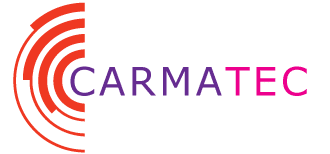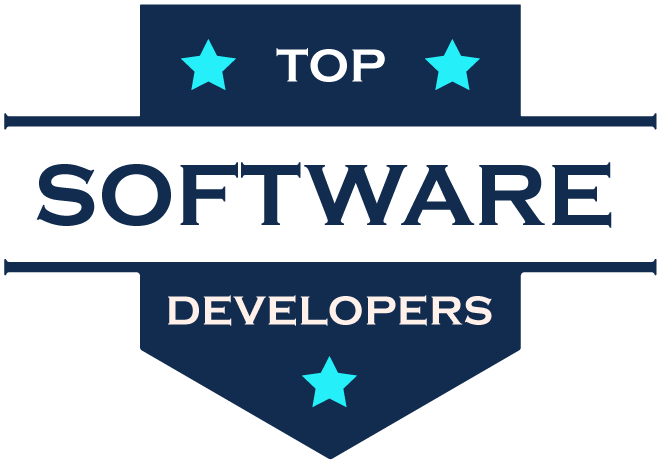As data continues to drive business decisions, the demand for efficient and powerful data analytics tools is higher than ever. Data analysts need cutting-edge solutions to process, visualize, and extract insights from vast amounts of data. In 2025, several data analytics tools stand out as industry leaders, offering advanced features to enhance decision-making and operational efficiency.
This blog explores the top 20 data analytics tools for 2025, helping data analysts choose the best solutions to stay competitive in the evolving digital landscape.
What is Data Analytics?
Data Analytics is the process of examining, cleaning, transforming, and interpreting data to extract useful insights, identify trends, and support decision-making. It involves using various statistical, mathematical, and computational techniques to analyze large datasets and convert raw information into actionable knowledge.
Key Components of Data Analytics
- Data Collection – Gathering structured and unstructured data from various sources such as databases, cloud storage, IoT devices, social media, and enterprise applications.
- Data Cleaning & Preparation – Removing inconsistencies, handling missing values, and structuring the data for analysis.
- Exploratory Data Analysis (EDA) – Understanding data patterns, distributions, and relationships through statistical techniques and visualizations.
- Data Processing & Analysis – Applying algorithms, machine learning, and statistical models to identify trends, correlations, and patterns.
- Data Visualization – Presenting insights using charts, graphs, and dashboards to aid decision-making.
- Decision-Making & Reporting – Using insights derived from analytics to make informed business decisions and drive strategic actions.
Types of Data Analytics
- Descriptive Analytics – Summarizes past data to understand what happened (e.g., sales reports, KPI dashboards).
- Diagnostic Analytics – Identifies reasons behind past trends or events (e.g., root cause analysis of a drop in sales).
- Predictive Analytics – Uses statistical models and machine learning to forecast future trends (e.g., demand forecasting, risk assessment).
- Prescriptive Analytics – Suggests actions based on data analysis to optimize outcomes (e.g., recommendation engines, supply chain optimization).
Importance of Data Analytics
- Improves Decision-Making – Helps businesses make data-driven, strategic decisions rather than relying on intuition.
- Enhances Efficiency – Identifies inefficiencies and optimizes business processes.
- Boosts Customer Experience – Analyzes customer behavior to personalize services and improve satisfaction.
- Drives Innovation – Identifies new market trends and business opportunities.
Reduces Risks – Helps in fraud detection, cybersecurity, and risk management.
Industries Using Data Analytics
- Retail & E-commerce – Customer behavior analysis, sales forecasting, inventory management.
- Healthcare – Predictive diagnostics, patient data analysis, resource allocation.
- Finance & Banking – Fraud detection, credit risk assessment, investment analytics.
- Marketing & Advertising – Campaign performance analysis, customer segmentation.
- Manufacturing – Supply chain optimization, production quality control.
Top 20 Data Analytics Tools for Data Analysts in 2025
1. Tableau
Tableau is a powerful data visualization tool that allows users to create interactive and shareable dashboards. It offers drag-and-drop functionality and supports various data sources, making it ideal for business intelligence and data analytics.
Key Features:
- Real-time data analysis
- AI-powered insights
- Extensive data visualization capabilities
2. Microsoft Power BI
Power BI is a business analytics tool that enables users to visualize data and share insights across their organization. With seamless integration into Microsoft services, it is a top choice for enterprises.
Key Features:
- Cloud-based and on-premises deployment
- Customizable dashboards and reports
- AI-enhanced data modeling
3. Google Data Studio
Google Data Studio is a free tool that transforms raw data into interactive and visually compelling reports. It integrates with various Google services and third-party data sources.
Key Features:
- Free and user-friendly interface
- Real-time collaboration
- Extensive data source connectivity
4. SAS Analytics
SAS Analytics is a powerful platform for advanced analytics, business intelligence, and predictive modeling. It is widely used in enterprise environments for handling complex data analysis.
Key Features:
- Machine learning and AI capabilities
- Data mining and text analytics
- High-level statistical analysis
5. Apache Spark
Apache Spark is an open-source, big-data processing framework known for its fast data processing and analytics. It supports multiple languages, including Python, Java, and Scala.
Key Features:
- High-speed data processing
- Large-scale data handling
- Integration with Hadoop and cloud storage
6. KNIME
KNIME is an open-source analytics tool that allows users to design and deploy data science workflows. It is widely used for predictive analytics and data mining.
Key Features:
- No-code/low-code workflow automation
- Data preprocessing and transformation
- Machine learning and AI integrations
7. IBM Cognos Analytics
IBM Cognos Analytics is an AI-powered business intelligence tool that provides data visualization, reporting, and analytics capabilities.
Key Features:
- AI-driven insights
- Self-service data exploration
- Seamless cloud and on-premises integration
8. Qlik Sense
Qlik Sense is a data analytics and visualization tool that enables interactive data exploration and dashboard creation.
Key Features:
- Associative data model for dynamic exploration
- Augmented analytics and AI insights
- Multi-cloud architecture support
9. Alteryx
Alteryx is an end-to-end data analytics platform designed for data preparation, blending, and predictive analytics.
Key Features:
- Drag-and-drop workflow automation
- Data cleansing and transformation
- Advanced statistical modeling
10. RapidMiner
RapidMiner is a machine learning and predictive analytics platform offering automation and deep learning capabilities.
Key Features:
- No-code/low-code machine learning
- Automated model training and evaluation
- Seamless data integration
11. Looker
Looker is a business intelligence and data visualization tool that enables real-time data exploration and reporting.
Key Features:
- SQL-based data modeling
- Real-time data connectivity
- Customizable dashboards
12. Sisense
Sisense is a data analytics platform designed for embedding analytics into applications and workflows.
Key Features:
- AI-powered analytics
- White-label embedding capabilities
- Data preparation and transformation
13. Databricks
Databricks is a cloud-based data analytics platform optimized for big data and AI-driven analytics.
Key Features:
- Unified data analytics and machine learning
- Scalable cloud infrastructure
- Apache Spark-based architecture
14. Domo
Domo is a cloud-based business intelligence platform that provides real-time data visualization and dashboarding solutions.
Key Features:
- AI-powered data insights
- Drag-and-drop dashboard creation
- Mobile-friendly interface
15. Yellowfin BI
Yellowfin BI is an analytics platform known for automated data discovery and storytelling capabilities.
Key Features:
- Data storytelling and collaboration tools
- AI-driven automated insights
- Interactive dashboards
16. Mode Analytics
Mode Analytics is a data science platform designed for SQL-based data exploration and collaboration.
Key Features:
- SQL and Python-based analytics
- Real-time reporting and visualization
- Collaboration tools for data teams
17. Google BigQuery
Google BigQuery is a cloud-based data warehouse that enables fast SQL-based analytics on large datasets.
Key Features:
- Serverless data warehousing
- Built-in machine learning capabilities
- Integration with Google Cloud ecosystem
18. Zoho Analytics
Zoho Analytics is a self-service BI and analytics tool with drag-and-drop reporting capabilities.
Key Features:
- Automated data blending
- AI-powered data alerts
- Cloud and on-premises deployment
19. TIBCO Spotfire
TIBCO Spotfire is an advanced data visualization and analytics tool designed for enterprise analytics.
Key Features:
- Predictive and real-time analytics
- AI-powered data discovery
- Interactive dashboards
20. Hex
Hex is a modern data analysis tool that allows analysts to collaborate on data science projects in an interactive notebook environment.
Key Features:
- Notebook-style analytics
- Collaborative and interactive workflows
- Cloud-native scalability
Criteria for Selecting a Data Analytics Tool
Selecting the right data analytics tool is crucial for businesses and data analysts to efficiently process, analyze, and visualize data. Here are the key factors to consider when choosing a data analytics tool:
1. Ease of Use
A user-friendly interface, drag-and-drop functionality, and intuitive design make it easier for non-technical users to navigate and perform data analysis without extensive training.
2. Data Processing Capabilities
The tool should handle large datasets efficiently, support real-time data processing, and offer robust ETL (Extract, Transform, Load) capabilities for data cleansing and transformation.
3. Scalability
Choose a tool that can scale with your business needs. Cloud-based solutions offer better flexibility for growing data volumes and increasing user demands.
4. Integration with Other Tools
A good data analytics tool should integrate seamlessly with databases, cloud services, business intelligence platforms, and third-party applications like CRM or ERP systems.
5. Data Visualization Features
Advanced visualization options such as charts, graphs, heatmaps, and dashboards help users interpret and present data effectively. Interactive reports and real-time visual updates enhance decision-making.
6. AI and Machine Learning Capabilities
Modern analytics tools leverage AI and ML to automate data insights, predictive analytics, and trend forecasting, providing businesses with smarter decision-making tools.
7. Security and Compliance
Ensuring that the tool meets industry security standards and compliance regulations (e.g., GDPR, HIPAA) is essential for protecting sensitive business data.
8. Deployment Options (Cloud vs. On-Premises)
Cloud-based solutions offer flexibility and lower upfront costs, while on-premises solutions provide greater control over data security and customization. Choose based on your organization’s infrastructure.
9. Cost and Pricing Structure
Consider the total cost of ownership, including licensing fees, subscription costs, and additional charges for integrations or advanced features. Free and open-source tools may be suitable for startups and small businesses.
10. Collaboration Features
For teams working with data, collaboration tools such as shared dashboards, real-time report editing, and role-based access controls are essential for efficiency.
By evaluating these criteria, businesses can select a data analytics tool that aligns with their goals, enhances productivity, and delivers actionable insights.
Difference Between Business Analytics and Business Intelligence Solutions
Business Analytics (BA) and Business Intelligence (BI) are often used interchangeably, but they serve different purposes in the data-driven decision-making process. Below is a detailed comparison to help understand the key differences between the two:
| Feature | Business Analytics (BA) | Business Intelligence (BI) |
|---|---|---|
| Definition | Business Analytics focuses on analyzing past data to predict future trends, optimize operations, and support decision-making through statistical analysis and machine learning. | Business Intelligence focuses on collecting, processing, and visualizing historical and real-time data to monitor business performance and support operational decision-making. |
| Objective | Helps businesses understand “why” something happened and “what might happen” next. | Provides insights into “what happened” and “how it happened.” |
| Approach | Predictive and prescriptive (uses statistical modeling, AI, and machine learning). | Descriptive and diagnostic (analyzes past and present data for reporting). |
| Data Processing | Uses advanced data analytics techniques such as predictive modeling, data mining, and AI-driven insights. | Uses dashboards, reports, and visualization tools to summarize business performance. |
| Decision-Making | Aims at future-oriented, data-driven strategies based on forecasting and optimization. | Supports real-time operational decisions through data monitoring and reporting. |
| Use Cases | Predicting customer behavior, risk management, demand forecasting, and optimization. | Performance tracking, KPI monitoring, reporting, and operational efficiency analysis. |
| Examples of Tools | SAS Analytics, RapidMiner, KNIME, Google BigQuery. | Power BI, Tableau, IBM Cognos, Qlik Sense. |
Which One to Choose?
- If your goal is to forecast trends, optimize future decisions, and implement predictive analytics, Business Analytics is the right choice.
- If you need to track performance, generate reports, and improve operational efficiency using historical data, Business Intelligence is more suitable.
- Many organizations use a combination of both to leverage data-driven insights effectively.
Conclusion
Data analytics is a rapidly evolving field, and choosing the right tool is essential for maximizing efficiency and accuracy. The 20 tools listed above offer a wide range of capabilities, from visualization to advanced machine learning, catering to various business needs. As data continues to grow in complexity, leveraging these analytics solutions will be crucial for staying competitive in 2025. If your business needs expert guidance in implementing data analytics tools, Carmatec provides tailored Data analytics consulting services to drive data-driven success.
Frequently Asked Questions
1. What is a data analytics tool, and why is it important?
A data analytics tool is a software application that helps businesses collect, process, analyze, and visualize data to uncover insights and make informed decisions. These tools are essential for improving operational efficiency, identifying trends, and gaining a competitive advantage in a data-driven world.
2. How do I choose the right data analytics tool for my business?
Choosing the right tool depends on your specific needs, budget, and technical expertise. Factors to consider include data processing capabilities, visualization features, integration options, scalability, and whether you need cloud-based or on-premises solutions.
3. What are the key benefits of using data analytics tools?
Data analytics tools help businesses by enabling real-time decision-making, enhancing data visualization, improving data accuracy, automating repetitive tasks, and identifying hidden patterns through AI and machine learning capabilities.
4. Are free data analytics tools effective for businesses?
Yes, free tools like Google Data Studio and KNIME can be highly effective for small businesses and startups. However, larger enterprises may require more advanced features and scalability, which premium tools like Tableau, Power BI, or SAS Analytics offer.
5. Can non-technical users work with data analytics tools?
Many modern data analytics tools offer user-friendly, no-code/low-code interfaces, making them accessible to non-technical users. Tools like Power BI, Tableau, and Zoho Analytics provide drag-and-drop functionality and automated insights to simplify data analysis.













